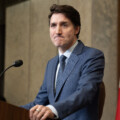Here’s some advice to Canadian politicians: Please don’t fall into the age-old trap that so many other politicians have before you. Stop referencing Canada’s brilliant historic successes as proof that we’re an innovative country.
Specifically, stop talking about insulin and the Canadarm. It’s become embarrassing. Every time a politician wants to talk about innovation in Canada, these are the only two examples they seem to be able to pull out of their hat.
The problem with these cases is that both of them are decades if not a century old, and neither of them resulted in meaningful economic growth for Canada.
In reality, the harder truth to swallow is that we are not a productive economy (relative to our peers), and we do not have a system that disproportionately encourages innovation.
With the Conservative leadership race coming to a close, the party’s focus will soon shift to election preparedness and platform building. Based on current polling, Conservatives should enjoy a healthy advantage over their opponents on questions of the economy.
They need a bold policy platform to steer the Canadian economy into the coming decades.
Last year, under the leadership of Erin O’Toole, the party’s platform rightly emphasised a focus on innovation, but did not properly articulate how it fits into a broader platform of economic growth and productivity.
I’ll use some of the key policy ideas proposed in the O’Toole platform to offer some opinions and suggestions for what a renewed Conservative platform should look like in the next election.
O’Toole’s platform had some reasonable ideas, but most of which did not go far enough. And more broadly, it seemed evident that the platform authors suffered from what other governments and parties have historically fallen victim to as well.
Namely, politicians think of innovation as a sector of our economy, or worse, as a cute pastime for hoodie-wearing millennials hanging out in government-subsidised startup incubators.
The only way to drive meaningful innovation in Canada is to view all economic growth and productivity as an output of effective innovation.
To innovate is simply to introduce a new product or service to the market for the first time, or to improve an existing one under threat of competition. With that definition, all businesses should view innovation as critical to their own growth and competitiveness, and the Canadian economy is ultimately the beneficiary.
Here are some of the big takeaways from O’Toole’s plan, and my thoughts on how these could be improved upon, and what might be altogether missing.
- Reduce the income tax rate by 50 percent on patented technologies being developed and commercialised in Canada, by Canadian companies.
You won’t find me arguing against a tax reduction on startups, but the condition tying this incentive to patented technologies only shows a lack of depth our politicians have when it comes to modern technology. Patents are not what they used to be, particularly in the fastest growing segments of our tech industries building modern software.
This framing of the policy likely benefits incumbents at the cost of new entrants, which is a common theme in most existing government innovation programs.
It also does nothing for Canadian companies with global aspirations, as their revenues will be taxed in the markets that they sell their products and services into.
Ultimately, the simplest solution to partially address this is a general reduction in the federal corporate tax rate. - Introduce flow-through shares as a tax incentive mechanism to encourage investment in innovative companies.
Although there may be some merit to this policy, there are a lot of nuances that make technology companies different from junior mining firms (where flow-through shares were originally introduced).
Instead of creating new complex tax deduction rules for investors, why not simply revisit the capital gains treatment of investments directed to certain types of early-stage innovative businesses?
Investors providing the original seed capital to a new startup should be completely exempt from long term capital gains. These investors take incredible risks and provide the first breath of life into an idea that has the potential to turn into a business.
- Stop government funding of foreign-owned technologies and companies; namely: Huawei.
Of course, the Canadian federal government should not be subsidising Chinese state-owned research and development. I think there is general consensus on this across the political spectrum. More broadly on this policy though, the devil will be in the details.
Already today, many of our innovation-focused government incentives are tied to CCPC rules (Canadian Controlled Private Corporations), which in principle sound positive, but in practice constrain world-class Canadian entrepreneurs from raising significant sums of capital from more established venture capital markets like the U.S.
To be “foreigned-owned” is a broad term. Many Canadian companies count “foreigners” among their investors; predominantly American Venture Capitalists.
You don’t have to look much farther than home-grown Shopify. Their success, although a Canadian story, was fuelled heavily by U.S. investment dollars. We should celebrate this, not seek to discourage it.
We should scrap the CCPC rules, and replace them with some simple conditions requiring the substance of a business to be undertaken in Canada. - Fix the SR&ED program by simplifying the application process and moving it to another government department.
Any Canadian entrepreneur who has dealt with SR&ED will agree that this program is completely broken. I would argue, irreparably.
Although I agree that it’s laughable that our #1 government incentive program for innovation is managed by our tax collectors (the CRA), I don’t think the solution is to transfer it to a different, equally bureaucratic, government department.
SR&ED is a political third rail, but ultimately it needs to be unwound. The billions of dollars we spend on it every year have no measurable impact on our economic growth, other than having spurred an industry of specialised form-filling consultants.
A Conservative government should cancel SR&ED. We should redirect those billions of dollars to a new sovereign wealth fund focused on investing in technology businesses, and operated at arm’s length from any bureaucracy in Ottawa. Singapore has found meaningful success with this model through Temasek; which has now become a globally renowned tech investor.
- Address the “brain drain”
Although O’Toole made mention of the fact that we see a large number of our STEM graduates moving to the U.S. to pursue opportunity, he didn’t specifically address how we might solve this.
The proposed policies above would play a role in creating a more attractive market in Canada, but ultimately we could be more precise with addressing our brain drain problem.
The University of Waterloo, for example, sees more than 50 percent of its graduating software engineers move to the U.S., after having received four years of heavily subsidised Canadian post-secondary education.
A brain drain policy would revisit our education funding to post-secondary students, such that it ties any subsidy to a condition of working or building a business in Canada post graduation. Simply put, if a Waterloo engineer wants to move to Silicon Valley, they should reimburse the federal government for the subsidised portion of their prior 4 years of tuition.
O’Toole’s platform was not a bad start on this topic, and the list of policies prescribed would likely have led to positive outcomes. But the goal should not be to tweak at the margins; it should be to fundamentally change the economic trajectory of our country.
Missing from O’Toole’s list above are two incredibly important topics that tie directly into our ability as a country to encourage innovation and drive economic prosperity: immigration and housing.
We need a significant increase in skilled and entrepreneurial immigration, and we need policies focused on addressing housing affordability in our biggest labour markets. Ultimately innovation happens when the right people concentrate in dense cities that they can afford to live in.
Both of these topics, however, would be better explored in follow up articles, but their prioritisation is critical to a successful innovation agenda.
Ultimately, we need to become a country that attracts and retains the best in the world and that encourages the pursuit of new ideas and competition. Anything short of that will see us continue to struggle in our efforts to maintain a measly 2 percent economic growth agenda… when we really should be aspiring to build a country where 5 percent is within reach.
To this end, it’s critical that we approach discussions on “innovation” through the right frame. Innovation is not a separate topic from economic growth. Innovation should be how we think of all economic policy. If we are not encouraging more global competitiveness and productivity within our industries, we will continue to fall behind others who do.
The focus should also not be on jobs. Jobs will be a result of intelligent economic policy focused on growth.
To get us there, we need leaders who ask the right questions.
“Why are our largest businesses (with the exception of Shopify and maybe Lululemon) all incumbents who primarily only operate in Canada? And primarily only come from the worlds of finance, insurance, and natural resource development?”
“How do we help create a class of new companies that have global aspirations and technology at the centre of their businesses?”
A government that thinks this way, and is not scared to ruffle some incumbent feathers along the way, will help build a Canada worth getting excited about.
Recommended for You

Laura David: Red pill, blue pill: Google has made its opening salvo in the AI-news war. What’s Canadian media’s next move?

The Notebook by Theo Argitis: Mark Carney’s first major tests

The Weekly Wrap: Trudeau left Canada in terrible fiscal shape—and now Carney’s on clean-up duty

Ben Woodfinden: Lament for an ‘elbows up’ nation




